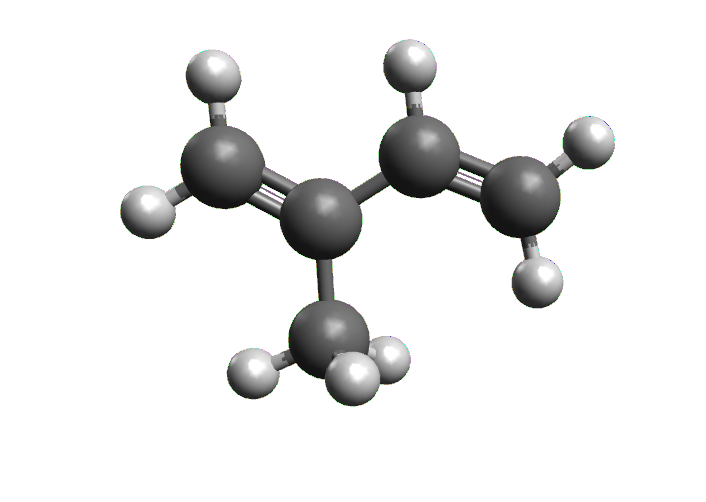The aroma of pine is a scent that evokes Christmas. The main component of the Christmas tree fragrance is pinene.
Pinene is an organic compound found in pine resin and is present in nature in the form of two different isomers: α-pinene and β-pinene. Alpha-pinene is the most abundant in pines, but both are commonly found in tree resin.
Pinene belongs to a family of compounds known as terpenes: it is a wide range of aromatic molecules very widespread in nature. You can also find them in essential oils, whose main role is to protect plants from bacteria, fungi and parasites. The structure that characterizes terpenes is called isoprene and has 5 carbon atoms.

Terpenes are distinguished by molecular mass and by multiples of isoprene units.
Pinene has ten carbon atoms and sixteen hydrogens. It is a highly flammable compound and this is one of the reasons why forest fires can spread very quickly.
Although it is the most abundant, pinene is not the only terpene among the volatile compounds emitted from pines. Other minor constituents are also present, such as limonene (which is also found in citrus peel), myrcene, camphene and fellandrene (do exercise 42).
Other non-pterpenic compounds also play a role in the aroma of pines.
The main one is bornile acetate. This organic compound that is part of the class of esters is a monoterpenic ester. These compounds generally offer a wide range of mostly pleasant odors. Although its proportion in the volatile oils of the pines varies from species to species, it contributes to the smell of fresh and clean pine and is therefore commonly used to produce pine fragrances. According to several studies, bornyl acetate is also a sexual pheromone of various species of insects that however synthesize it in a molecule that is the mirror image (the enantiomer) of that produced by plants. For this reason, the different structure does not attract insects and preserves the plant.
A range of different terpenes is released from various trees into the forests. These do much more than simply provide the characteristic smells of the woods: scientists have found that terpenes can react with certain chemicals in the air to form aerosol particles. Aerosols can be “seeds” for clouds, allowing them to form from water vapor, bringing an increase in cloud cover that can have a fundamental refreshing effect.
Terpenes are also responsible for the blue haze that is sometimes visible on mountains covered with pines. In fact, the aerosols that terpenes form in the atmosphere can have an effect of dispersion of sunlight, producing a blue halo.

At Christmas time you can find the scent of conifers even at home choosing to decorate a real Christmas tree without feeling guilty about the environment. According to ISPRA data, plastic trees have a carbon footprint of 40 kg of CO2, not to mention that they take well over 200 years to degrade. A plant, in contrast, has a purifying action on the environment as it absorbs carbon dioxide, produces oxygen and releases essential oils. In addition a plant can also be composted and disposed of in ecological islands. It is indeed desirable because planting it in a forest can lead to ecological problems and genetic pollution.
ACTIVITY: Learn more about the functions of terpenes trying to find a correlation between structure and property.

